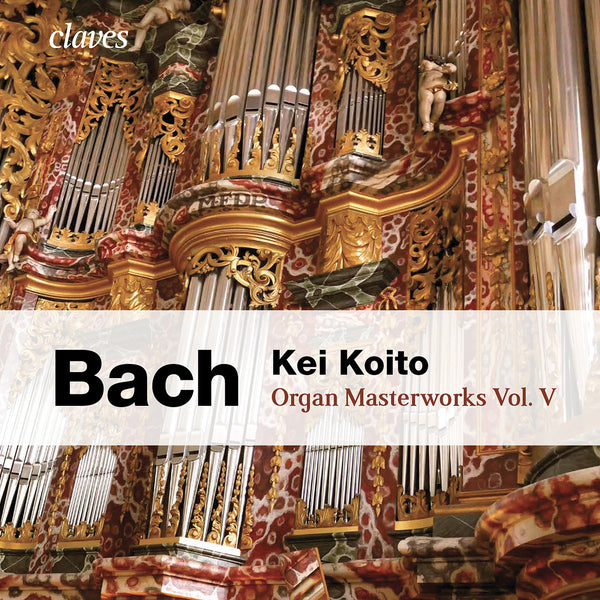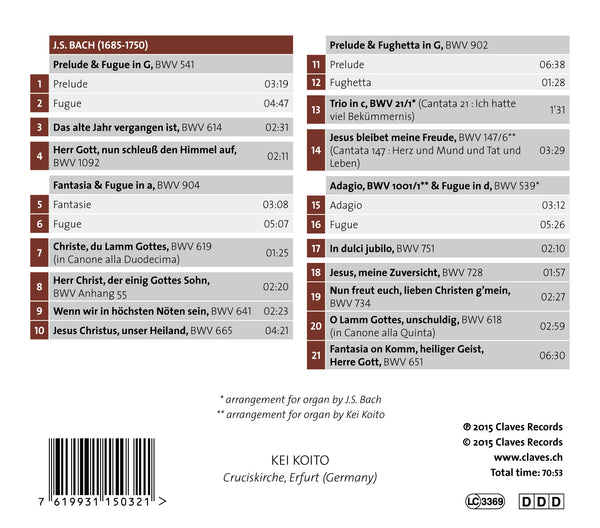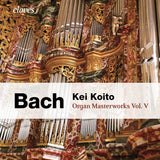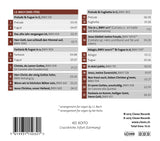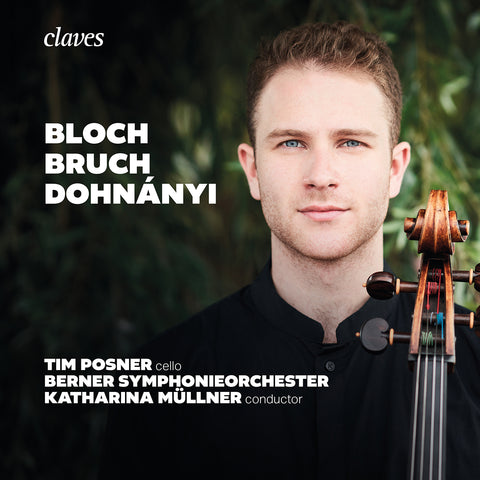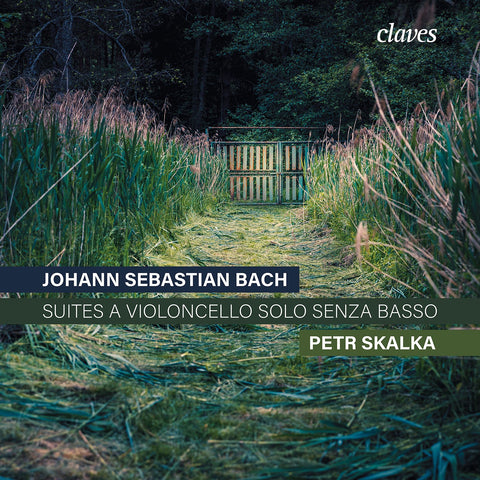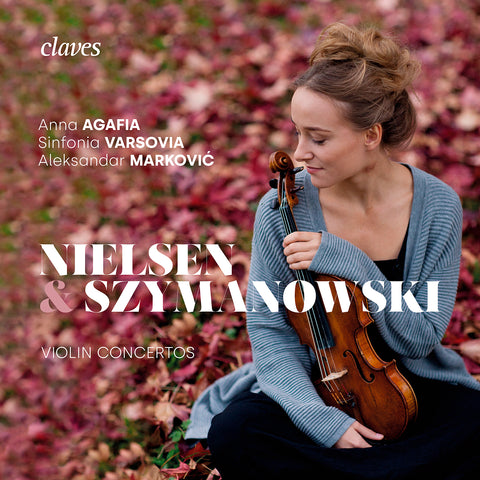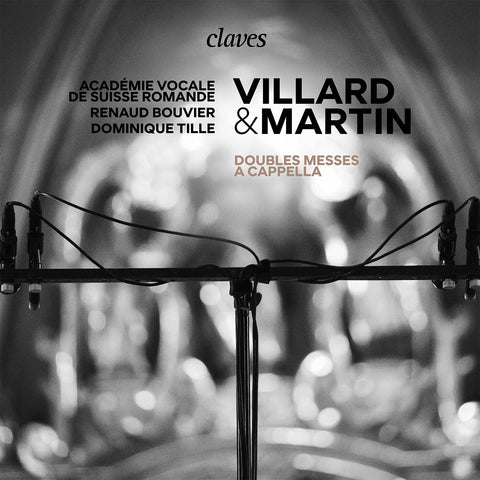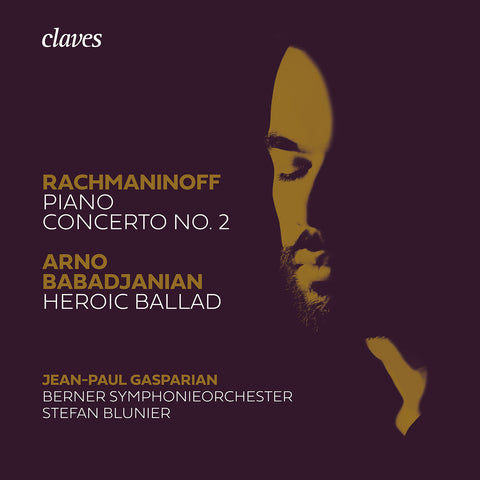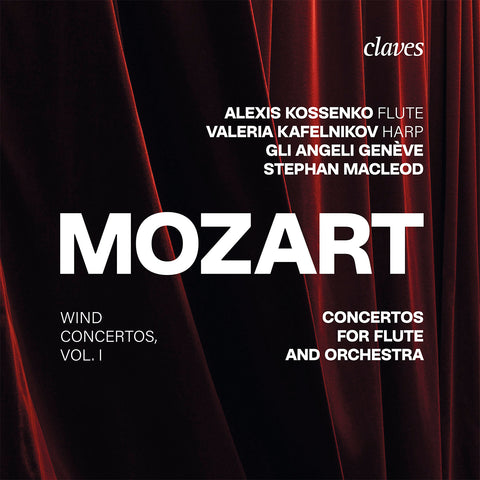(2015) Bach : Organ Masterworks, Vol. V - Kei Koito
Kategorie(n): Alte Musik
Instrument(e): Orgel
Hauptkomponist: Johann Sebastian Bach
CD-Set: 1
Katalog Nr.:
CD 1503
Freigabe: 01.07.2015
EAN/UPC: 7619931150321
- UPC: 191018908249
Dieses Album ist jetzt neu aufgelegt worden. Bestellen Sie es jetzt zum Sonderpreis vor.
CHF 18.50
Dieses Album ist nicht mehr auf CD erhältlich.
Dieses Album ist noch nicht veröffentlicht worden. Bestellen Sie es jetzt vor.
CHF 18.50
Dieses Album ist nicht mehr auf CD erhältlich.
CHF 18.50
Inklusive MwSt. für die Schweiz und die EU
Kostenloser Versand
Dieses Album ist nicht mehr auf CD erhältlich.
Inklusive MwSt. für die Schweiz und die EU
Kostenloser Versand
Dieses Album ist jetzt neu aufgelegt worden. Bestellen Sie es jetzt zum Sonderpreis vor.
CHF 18.50
Dieses Album ist nicht mehr auf CD erhältlich.
This album has not been released yet.
Pre-order it at a special price now.
CHF 18.50
Dieses Album ist nicht mehr auf CD erhältlich.
CHF 18.50
Dieses Album ist nicht mehr auf CD erhältlich.
NEU: Einkäufe werden von nun an in der Währung Ihres Landes getätigt. Land hier ändern oder beim Checkout
SPOTIFY
(Verbinden Sie sich mit Ihrem Konto und aktualisieren die Seite, um das komplette Album zu hören)
BACH : ORGAN MASTERWORKS, VOL. V - KEI KOITO
The Volckland organ (1732/37) of Erfurt’s Cruciskirche is one of the most remarkable baroque (Hochbarock) organs of the Thuringe instrument maker and music theorist. Jakob Adlung refers to it in his Musica Mechanica Organoedi (Berlin, 1768), saying that “Der Klang dieser Orgel ist unvergleichlich.” (“The sound of this organ is incomparable).
The foundation stops of this organ are rich in colour and character. There are several 8’ stops: Principal, Gedackt, Gambe, Gemshorn, Traversiere (sic), Flaut (sic) douce, Quintaton. Among the
Mutation stops, there are two Fifths (Hw and Bw) and the Hw Mixture stop (16’ Plenum) contains the Third. The Hw Cymbel stop is bright and the Bw Mixture is surprisingly full. The Plenum is very powerful and majestic, although the instrument has but 28 stops, with only 2 reeds (Vox humana 8’, Posaune 16’).
During an initial visit a few years ago, I was immediately drawn to elaborating an unusual Bach programme on this organ. Besides authenticated works, there is a piece classed “Anhang”, works that had been attributed to Bach for a long time, as well as arrangements of Cantatas, works which all sound particularly well here, and which, thanks to a unique palette of character, colour and expression, sound at times like a baroque string ensemble, and a times like a vocal music ensemble.
Where the Fantasia and Fugue in A (BWV 904) is concerned, it can be noted, with Christoph Wolff, that “one supposes that this work was surely played on the organ”. For these extraordinary pages, I have occasionally inserted a bass part on the pedalboard.
Lastly, I should like to express my deepest gratitude to the three authors of the texts of this booklet, all of whom are brilliant Bach specialists who accepted to give their points of view, the fruit of their research and pertinent observations on the works of the present programme.
Kei Koito
Translated from French by Isabelle Watson
__________
Français
Notes de l’interprète
À propos de l’orgue Volckland (1732/37) de la Cruciskirche d’Erfurt, un des plus remarquables orgues baroques (Hochbarock) de Thuringe, le facteur d’instruments et théoricien de la musique Jakob Adlung signale, dans son Musica Mechanica Organoedi (Berlin, 1768), que « Der Klang dieser Orgel ist unvergleichlich. » (« Le son de cet orgue est incomparable. »)
Les jeux de fonds de cet orgue sont riches en couleur et en caractère. On y trouve plusieurs jeux de 8 pieds : Principal, Gedackt, Gambe, Gemshorn, Traversiere (sic), Flaut (sic) douce, Quintaton. Parmi les jeux de mutations, il y a deux quintes (Hw et Bw) et le jeu de Mixture du Hw (Plenum avec 16 pieds) contient la Tierce. Le jeu de Cymbel du Hw est brillant et la Mixture du Bw est étonnamment volumineuse. Le Plenum donne une impression de grande puissance et de majesté, bien que l’instrument ne compte que 28 jeux, dont deux anches seulement (Vox humana 8’, Posaune 16’).
Lors d’une première visite il y a quelques années, j’ai été d’emblée intéressée à construire sur cet orgue un programme Bach hors des sentiers battus. Aux côtés d'œuvres authentifiées, on trouvera une œuvre classée « Anhang », des œuvres longtemps attribuées à Bach, ainsi que des arrangements de cantates, toutes pièces qui sonnent fort bien ici, et qui, grâce à une palette de caractères, de couleurs et d’expressions uniques sonnent, tantôt comme un ensemble à cordes baroque, tantôt comme un ensemble de musique vocale.
Au sujet de la Fantaisie et Fugue en la (BWV 904), il est à noter, avec Christoph Wolff, que « l’on suppose que cette œuvre a été sûrement jouée à l’orgue ». Pour ces extraordinaires pages, j’ai ponctuellement ajouté une partie de basse au pédalier.
Enfin, je souhaite exprimer ma vive gratitude aux trois auteurs des textes de ce livret, tous éminents spécialistes de Bach, qui ont accepté d’exprimer leur point de vue, fruit de leurs recherches et de leurs observations pénétrantes quant aux œuvres du présent programme.
Kei Koito
Comments from the musician
The Volckland organ (1732/37) of Erfurt’s Cruciskirche is one of the most remarkable baroque (Hochbarock) organs of the Thuringe instrument maker and music theorist. Jakob Adlung refers to it in his Musica Mechanica Organoedi (Berlin, 1768), saying that “Der Klang dieser Orgel ist unvergleichlich.” (“The sound of this organ is incomparable).
The foundation stops of this organ are rich in colour and character. There are several 8’ stops: Principal, Gedackt, Gambe, Gemshorn, Traversiere (sic), Flaut (sic) douce, Quintaton. Among the
Mutation stops, there are two Fifths (Hw and Bw) and the Hw Mixture stop (16’ Plenum) contains the Third. The Hw Cymbel stop is bright and the Bw Mixture is surprisingly full. The Plenum is very powerful and majestic, although the instrument has but 28 stops, with only 2 reeds (Vox humana 8’, Posaune 16’).
During an initial visit a few years ago, I was immediately drawn to elaborating an unusual Bach programme on this organ. Besides authenticated works, there is a piece classed “Anhang”, works that had been attributed to Bach for a long time, as well as arrangements of Cantatas, works which all sound particularly well here, and which, thanks to a unique palette of character, colour and expression, sound at times like a baroque string ensemble, and a times like a vocal music ensemble.
Where the Fantasia and Fugue in A (BWV 904) is concerned, it can be noted, with Christoph Wolff, that “one supposes that this work was surely played on the organ”. For these extraordinary pages, I have occasionally inserted a bass part on the pedalboard.
Lastly, I should like to express my deepest gratitude to the three authors of the texts of this booklet, all of whom are brilliant Bach specialists who accepted to give their points of view, the fruit of their research and pertinent observations on the works of the present programme.
Kei Koito
Translated from French by Isabelle Watson
__________
Français
Notes de l’interprète
À propos de l’orgue Volckland (1732/37) de la Cruciskirche d’Erfurt, un des plus remarquables orgues baroques (Hochbarock) de Thuringe, le facteur d’instruments et théoricien de la musique Jakob Adlung signale, dans son Musica Mechanica Organoedi (Berlin, 1768), que « Der Klang dieser Orgel ist unvergleichlich. » (« Le son de cet orgue est incomparable. »)
Les jeux de fonds de cet orgue sont riches en couleur et en caractère. On y trouve plusieurs jeux de 8 pieds : Principal, Gedackt, Gambe, Gemshorn, Traversiere (sic), Flaut (sic) douce, Quintaton. Parmi les jeux de mutations, il y a deux quintes (Hw et Bw) et le jeu de Mixture du Hw (Plenum avec 16 pieds) contient la Tierce. Le jeu de Cymbel du Hw est brillant et la Mixture du Bw est étonnamment volumineuse. Le Plenum donne une impression de grande puissance et de majesté, bien que l’instrument ne compte que 28 jeux, dont deux anches seulement (Vox humana 8’, Posaune 16’).
Lors d’une première visite il y a quelques années, j’ai été d’emblée intéressée à construire sur cet orgue un programme Bach hors des sentiers battus. Aux côtés d'œuvres authentifiées, on trouvera une œuvre classée « Anhang », des œuvres longtemps attribuées à Bach, ainsi que des arrangements de cantates, toutes pièces qui sonnent fort bien ici, et qui, grâce à une palette de caractères, de couleurs et d’expressions uniques sonnent, tantôt comme un ensemble à cordes baroque, tantôt comme un ensemble de musique vocale.
Au sujet de la Fantaisie et Fugue en la (BWV 904), il est à noter, avec Christoph Wolff, que « l’on suppose que cette œuvre a été sûrement jouée à l’orgue ». Pour ces extraordinaires pages, j’ai ponctuellement ajouté une partie de basse au pédalier.
Enfin, je souhaite exprimer ma vive gratitude aux trois auteurs des textes de ce livret, tous éminents spécialistes de Bach, qui ont accepté d’exprimer leur point de vue, fruit de leurs recherches et de leurs observations pénétrantes quant aux œuvres du présent programme.
Kei Koito
Return to the album | Read the booklet | Composer(s): Johann Sebastian Bach | Main Artist: Kei Koito







